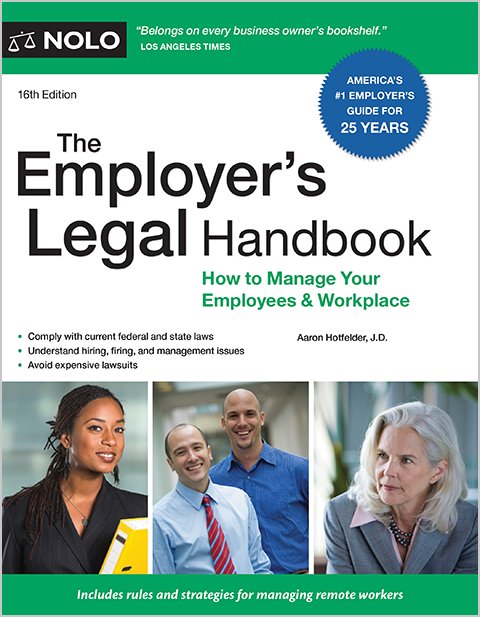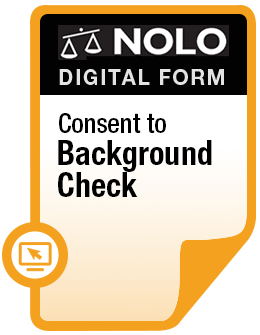Collaboration and communication are key to making progressive discipline work.
You've undoubtedly heard of "progressive discipline": an employee management strategy that provides a graduated spectrum of responses to employee problems. A progressive discipline program allows managers to choose the appropriate level of intervention for a variety of employee issues in performance, conduct, and attendance. A minor issue, such as being tardy to work, might call for an informal coaching session, while more serious discipline – even termination – might be in order for serious misconduct (such as sexual harassment) or for repeated performance or attendance problems.
Progressive discipline has evolved over time. It used to refer to a rigid system in which particular punitive measures were required for particular transgressions. Today, however, progressive discipline is often based on a coaching model: Rather than a way to force employees out, it's seen as a way to help employees improve, if they are willing and able to do so. Here are seven principles that underlie modern systems of progressive discipline.
- Principle 1: Your Goal Is Retention, Not Termination
- Principle 2: Discipline Should Be Proportionate
- Principle 3: Have the Facts at Your Fingertips
- Principle 4: Listen to Your Employees
- Principle 5: Collaboration Is the Key to Success
- Principle 6: Be Flexible Within a Consistent Framework
- Principle 7: Some Employment Relationships Don't Work Out
Principle 1: Your Goal Is Retention, Not Termination
Some managers mistakenly believe that the purpose of discipline is to build a case to fire employees down the road. Of course, handling disciplinary issues properly will help you preserve your right to end the employment relationship legally, if an employee can't improve. But that's just one of the benefits of the system, not its purpose.
As a manager, your goal when dealing with employees who've gotten off track isn't to fire them, but to help them improve their performance and renew their dedication to the job. Termination is seldom the best outcome for a business, when you consider how much it costs to hire and train a new employee, the decline in morale and productivity that can occur when an employee is fired, the real losses to your company of having a position vacant while you search for a replacement (which is also costly), and the potential for legal claims that accompany an employment termination.
Principle 2: Discipline Should Be Proportionate
Progressive discipline requires you to respond to an employee's behavior by choosing a disciplinary measure of corresponding seriousness. Responding to a relatively minor issue with an informal coaching session lets an employee know that you've identified a problem and you want to give the employee every chance to improve.
Similarly, giving a written warning to an employee who has engaged in serious misconduct indicates that the behavior is unacceptable and must stop immediately. In either case the employee you discipline is not the only audience for your action: Other employees will also se (or hear about) how you handle these issues and will get a better understanding of what you and the company expect.
Principle 3: Have the Facts at Your Fingertips
Before you meet with an employee to discuss a problem, you'll need to be ready to explain why correction is necessary. Employees need to understand the scope of the problem and to be included in the decision-making process. This means you can't just hand over a written warning; instead, you have to be prepared to explain the problem clearly, with pertinent examples and potential solutions.
Principle 4: Listen to Your Employees
Your ability to listen as you discuss performance or conduct issues will make or break the discipline process. If you monopolize the conversation or ignore your employee's effort to explain, your relationship with the employee might be jeopardized beyond repair – and you may not solve an otherwise solvable problem.
Listening carefully will help you understand the root of the problem and collaborate with the employee to come up with a solution. It will help you make sure that you've chosen the right disciplinary response. And, the employee will feel heard and understood, and will therefore be more willing to engage in the process and move forward with a positive attitude.
Principle 5: Collaboration Is the Key to Success
After you have explained how the employee's behavior is affecting the company and listened to the employee's side of the story, it's time to work together to develop an action plan for improvement. Collaboration allows the employee to feel some ownership of the resolution and take responsibility for making it happen. If you come into a disciplinary meeting with all the answers, your employee won't have to actively participate – and is more likely to disengage emotionally.
Principle 6: Be Flexible Within a Consistent Framework
Progressive discipline systems are fair because they require consistency. They require managers to treat similar problems alike and to differentiate between less serious and more serious issues. This framework provides a solid basis for making disciplinary decisions and deciding how to handle all of the particular and unique issues that might come up on your team.
However, because progressive discipline is rooted in collaboration, it allows also for some flexibility in handling disciplinary discussions, coming up with potential solutions, and working with employees to help them improve. Although the particular disciplinary measure you use will typically be dictated by the employee's behavior, the way you and the employee work together will depend on the facts.
Principle 7: Some Employment Relationships Don't Work Out
Although the goal of progressive discipline is to help employees improve, some employment relationships were just not meant to be. If an employee really can't or won't take the necessary steps to solve a problem, progressive discipline lays the proper foundation for a fair and legal termination process.
- Principle 1: Your Goal Is Retention, Not Termination
- Principle 2: Discipline Should Be Proportionate
- Principle 3: Have the Facts at Your Fingertips
- Principle 4: Listen to Your Employees
- Principle 5: Collaboration Is the Key to Success
- Principle 6: Be Flexible Within a Consistent Framework
- Principle 7: Some Employment Relationships Don’t Work Out



